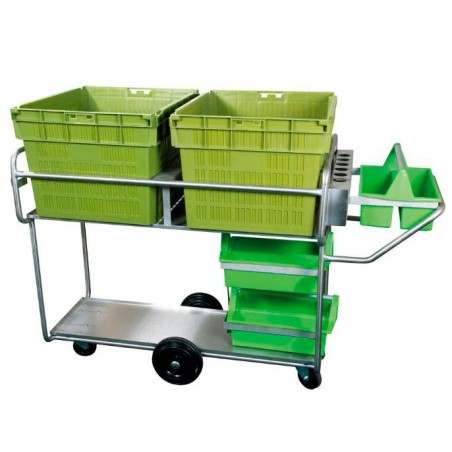Litter sizes of commercial sows have increased considerably over recent decades, and often exceed the number of functional teats on the sow. The objective of this study was to evaluate the effect of litter size after cross-fostering relative to sow functional teat number on piglet preweaning growth and mortality. A total of 39 litters (561 piglets) were used in a randomized complete block design; blocking factors were farrowing day and sow parity, body condition score, and functional teat number. Three Litter Size treatments were compared (relative to sow functional teat number): Decreased (two piglets less); Control (same number of piglets); Increased (two piglets more). Piglets were randomly allotted to treatment at 24 h after birth to form litters of the appropriate size, with similar mean and CV of birth weight within block. Weaning weights (WW) were collected at 19.5 ± 0.50 d of age; preweaning mortality (PWM) was recorded. Litter sizes were between 11 and 17 piglets, depending on block and treatment.
The Decreased treatment had lower PWM than the Increased (7.7% and 17.9%, respectively); the Control was intermediate (11.5%) and not different from the other treatments. The rate of decline in litter size from birth to weaning was greater for the Increased than the Decreased treatment (−0.16 vs. −0.05 piglets per day), with the Control (−0.09 piglets per day) being intermediate and different to the other two treatments. Litter sizes at weaning were greater for the Increased than the Decreased treatment (13.3 and 11.3, respectively); the Control treatment was intermediate (12.6) and not different to the other treatments. The log odds of PWM increased with the decreasing birth weight, at a similar rate for all Litter Size treatments. However, the intercept was greater for the Increased compared with the Decreased treatment; the Control was intermediate and different to the other two treatments. Mean WW tended to be greater for the Decreased (6.17 kg) compared to the Control and Increased treatments (5.86 and 5.84 kg, respectively).

In conclusion, increasing litter size after cross-fostering relative to the number of functional teats of the sow increased piglet PWM, and tended to decrease WW.
Vande Pol KD, Bautista RO, Olivo A, Harper H, Shull CM, Brown CB, Ellis M. Effect of rearing cross-fostered piglets in litters of differing size relative to sow functional teat number on preweaning growth and mortality. Translational Animal Science. 2021; 5(4): txab193. https://doi.org/10.1093/tas/txab193





